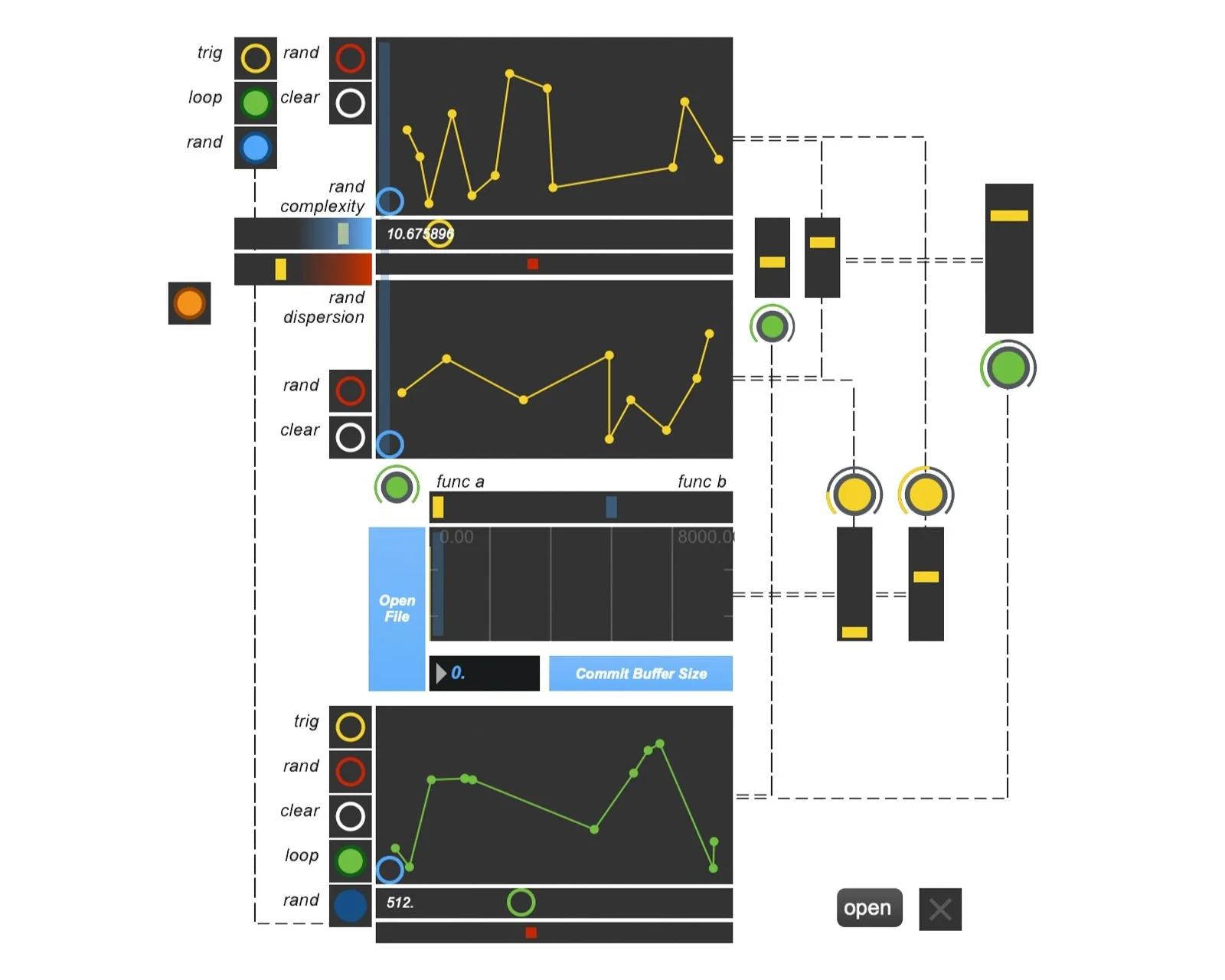Multibreak Buffer Traversals (2018)
Multibreak Buffer Traversals was a study in experimental means of scrubbing/traversing audio buffers—not unrelated to granular synthesis/pulsar synthesis or wavetable synthesis. The user could load multiple simultaneous audio buffers and define arbitrary 2-dimensional paths by which their individual samples could be accessed, crossfaded, compared, filtered, and more.
Perhaps one of the most interesting aspects of Multibreak Buffer Traversals was the stochastic generation of multiple simultaneous 2D trajectories, which could be constantly assessed/re-calculated as the program ran. It became possible to create traversal trajectories with quite complex shapes from a set of relatively simple rules regarding statistical density of breakpoints, probable axial divergence between neighboring breakpoints, the likelihood of linear vs. exponential vs. logarithmic paths between breakpoints, etc.
Ultimately, it produced a quite jarring, rhythmic, disorienting soup of jackhammer-like sample manipulation, pseudo-pulsar synthesis tones, wavetable-like drones, and more.
This application was original developed while teaching at the California Institute of the Arts, as an extension of guidance I was offering to some students regarding the handling of audio buffers in Max/MSP. As such, unlike many previous software tools, it was never developed into a performance tool—it was simply made for the purpose of experimentation and demonstration. That said, concepts formulated during its creation would eventually become the basis for Continual Transition’s Arbitrarily Traversable Memory Register (ATMR) and other software and hardware designs.
